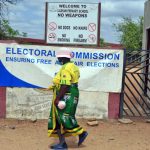Suspicions of a cover-up into Neil Aggett’s death in detention have deepened with testimony from an expert fingerprint analyst last week.
The original inquest into the 28-year-old trade unionist and physician’s death makes reference to a solitary fingerprint found at the death scene. It’s the absence of evidence of other fingerprints where Aggett was found hanging that calls into question the suicide theory given by the apartheid state. No one has been held accountable for Aggett’s death on 5 February 1982, after 70 days in detention. His family has never believed that he took his own life.
The court heard how Aggett would have had to climb the bars of his cell, tie the kikoy to the sixth crossbar from the floor, place the noose section of the knotted kikoy around his neck and then turn his body around, while suspended, to be facing away from the bars as he died – all without leaving other fingerprints. The print of his left forefinger was found directly above the knot in the kikoy where it was tied to the bars.
Sietze Albertse, a former policeman and now independent forensic crime scene and fingerprint analyst, continued his testimony at the end of the fourth week of the hearing in the Johannesburg High Court on 14 February 2020.
“I would have expected to find a sequence of fingerprints (impressions of other digits, or the palm of the hand), in relation to the fingerprint of the forefinger,” Albertse said.
Albertse’s investigation included recreating the hanging for forensic comparisons and insights into how Aggett’s life ended 38 years ago in cell 209 at John Vorster Square.
Albertse presented three hypothesised scenarios of how the fingerprint was found. The first, that Aggett made the impression himself as he climbed up to tie the kikoy to the bars. The second, that Aggett’s body was handled and his hand raised into position for the manipulation of leaving a fingerprint, and the third scenario is that his print was lifted randomly and written up as being found in a location that would, “have increased evidential value”.
Albertse examined the original reports of Charl Lambrecht, then a warrant officer in the South African Police’s fingerprinting department, who processed the death scene.
He pointed out shortcomings and serious omissions in notes, and official reports as well as indications of compromised procedures and contamination in how forensic evidence was collected.
The scene was processed in the early hours of the morning at about 3.45 am. Albertse said ambient light would have been best and in a scenario of a prison cell, the body could have been removed, the scene cleared and the cell door locked till a few hours later when daylight would have enhanced fingerprint collection. The haste to process was unnecessary, he said.
Albertse, in his report presented to the court, considered the statement of those at the scene including Brigadier Theunis Swanepoel, the most senior policeman present that morning. Swanepoel wrote in his account that he arrived to find that there were several policemen already at the scene. He also noted that the light in the cell was dim. Swanepoel wrote in his report that at 4.15 am, he gave the instruction to bring Aggett’s body down, after the fingerprinting had been completed and two uniformed policemen lifted Aggett’s body while Captain Andries Struwig climbed the bars to cut the kikoy to release the body.
There is a reference to only four photographs taken at the scene, (two black and white photos survive as evidence in the current reopened inquest). It was previously pointed out to the court that photographs at the scene were taken without the direction of a pathologist, or district surgeon. The body was not removed before fingerprinting was completed, which Albertse said would have amounted to just one side of the bars being processed for fingerprints.
Albertse said a stepladder should have been used as climbing the bars, as Struwig did, would have destroyed fingerprints. He also pointed out that a stepladder should have been used to process the scene properly, especially at the height of the sixth crossbar, where the fingerprint was said to be found.
Albertse said Lambrecht could have, but didn’t, mark and make notes of where Struwig came in contact with the bars. He put it down to “not good practice”. He added that rough notes, and official reports have to be accurate and detailed to give context and to stand up as evidence in court even years later. Lambrecht’s report makes note of other markings he noticed, but he said in court in 1982 that he processed the entire cell and didn’t find any other identifiable fingerprints that he could lift. He submitted the solitary fingerprint he said he lifted from the bars to the court.
The markings Lambrecht made reference to in 1982 are also not fully described. Albertse said even in the case of an impression of a slipped hand, a print of this nature would have been useful to indicate things like pressure on the bars and direction of movement.
Attorney for the Aggett family, Howard Varney, pointed out that the legal team for the family in the original inquest in 1982 did not have the benefit of a forensic fingerprint expert so they “would have been none the wiser”, about details such as the surface off of which Aggett’s fingerprint was made for the fingerprint submitted into evidence.
Lieutenant Steven Whitehead and Struwig were present at the death scene and both were known to be involved in the so-called “long weekend” of torture of Aggett that lasted 62 hours between 28-30 January 1982. Varney called it “not just unusual, but inconceivable”, that Whitehead and Struwig were allowed to be present at the death scene as they “could not be ruled out as suspects”, in Aggett’s death. Aggett had submitted a report against Whitehead for assault while in detention.
Albertse said it could not be known from the evidence if Lambrecht was aware of this situation, but said it is not good practice to “have too many people at a scene”. He said had Lambrecht felt intimidated by the senior ranking police officers, the protocol would have been for him to call his own senior officer to be present. Regardless of rank, Albertse said the fingerprinting unit is expected to take charge of a death, or crime scene for fingerprint and forensic evidence processing.
*Lambrecht is scheduled to testify this week. MC




















